Johanna Moore, Andie Parry, Kathryn Tyson, Annika Ganzeveld, Peter Mills, Amin Soltani, and Nicholas Carl
The Iran Update provides insights into Iranian and Iranian-sponsored activities abroad that undermine regional stability and threaten US forces and interests. It also covers events and trends that affect the stability and decision-making of the Iranian regime. The Critical Threats Project (CTP) at the American Enterprise Institute and the Institute for the Study of War (ISW) provides these updates regularly based on regional events. For more on developments and in Iran and the region, see our interactive map of Iran and the Middle East.
CTP and ISW have refocused the update to cover the Israel-Hamas war. The new sections address developments in the Gaza Strip, the West Bank, Lebanon, and Syria, as well as noteworthy activity from Iran’s Axis of Resistance. We do not report in detail on war crimes because these activities are well-covered in Western media and do not directly affect the military operations we are assessing and forecasting. We utterly condemn violations of the laws of armed conflict and the Geneva Conventions and crimes against humanity even though we do not describe them in these reports.
Key Takeaways:
- Lebanese Hezbollah-affiliated al Mayadeen reported that an Israeli armored unit advanced from the northwestern Gaza Strip south along the coast.
- Axis of Resistance and Palestinian media reported that the al Qassem Brigades clashed with an IDF unit in Beit Hanoun.
- Palestinian militias in the Gaza Strip conducted indirect fire attacks into Israel at their usual rate. Multiple Palestinian militias appeared to conduct joint indirect fire attacks on locations in Israel, which would suggest greater coordination between these groups.
- Anti-Israel militancy and protest activity in the West Bank returned to regular levels after surging on October 31. The Lions’ Den released a statement calling for further anti-Israel militancy in the West Bank.
- Iranian-backed militants, including Lebanese Hezbollah, conducted six attacks into Israel as part of an ongoing attack campaign targeting IDF radar and sensor sites and military targets.
- The Islamic Resistance in Iraq—a coalition of Iranian-backed Iraqi militias—claimed responsibility for a one-way drone attack targeting US forces in Syria.
- Iran and LH are continuing to promote the expectation in the information space that LH will announce some kind of escalation against Israel on November 3.
- Iranian-backed Iraqi militias are signaling that they may escalate against US forces in Iraq and Syria, as LH similarly messages against Israel.
- The Houthi movement may have conducted an attack targeting southern Israel, which would mark the fourth attempted Houthi attack on Israel since the war began.
- Iranian Foreign Affairs Minister Hossein Amir Abdollahian met Turkish President Recep Tayyip Erdogan and Foreign Affairs Minister Hakan Fidan in Ankara.
Gaza Strip
Axis of Resistance campaign objectives:Erode the will of the Israeli political establishment and public to launch and sustain a major ground operation into the Gaza Strip
Degrade IDF material and morale around the Gaza Strip
Lebanese Hezbollah (LH)-affiliated al Mayadeen reported that an Israeli armored unit advanced from the northwestern Gaza Strip south along the coast to Salah Khalaf Street and later attempted to move east, inland, to al Nasr Street and al Toum Street.[1] The commander of the IDF 162nd Division stated that Israeli forces had reached “the gates of Gaza City,” possibly corroborating this reporting.[2]
Axis of Resistance and Palestinian media reported that the al Qassem Brigades—the militant wing of Hamas—clashed with an IDF unit in Beit Hanoun on November 1. The al Qassem Brigades claimed that its militants destroyed at least four Israeli Merkava tanks with Yasin-105 anti-tank weapons.[3] The al Qassem Brigades also claimed to have bombed a gathering of IDF soldiers near Beit Hanoun using a quadcopter drone.[4] The al Quds Brigades—the militant wing of Palestinian Islamic Jihad (PIJ)—claimed that its fighters fought an IDF unit in Karamah, southwest Beit Lahia.
The al Qassem Brigades claimed that its militants engaged Israeli forces attempting to enter the Zaytoun neighborhood west of Gaza City. The al Quds Brigades militants reportedly fired Yasin-105 anti-tank weapons and conducted a mortar attack on advancing Israeli forces.[5] Palestinian media reported that militants were successful in destroying an Israeli armored personnel carrier during the fighting.[6] The al Quds Brigades claimed that its forces supported the fighting at Zaytoun and caused an unspecified number of Israeli casualties.[7]
Palestinian militias in the Gaza Strip conducted indirect fire attacks into Israel at their usual rate on November 1. The al Qassem Brigades claimed responsibility for eight indirect fire attacks.[8] The al Quds Brigades claimed responsibility for another three indirect fire attacks.[9] The Abu Ali Mustafa Brigades—the militant wing of the Popular Front for the Liberation of Palestine—claimed to launch mortars into southern Israel.[10] Palestinian media reported that the al Aqsa Martyrs Brigades—the self-claimed militant wing of Fatah— conducted three rocket attacks.[11]
Multiple Palestinian militias appeared to conduct joint indirect fire attacks on locations in Israel, which would suggest greater coordination between these groups. The al Qassem Brigades and Abu Ali Mustafa Brigades independently claimed mortar and rocket attacks on Nirim, southern Israel, at the same time.[12] The al Quds Brigades and al Qassem Brigades jointly claimed mortar attacks on the Erez crossing into the Gaza Strip.[13]
Recorded reports of rocket attacks; CTP-ISW cannot independently verify impact.
Recorded reports of rocket attacks; CTP-ISW cannot independently verify impact.
West Bank
Axis of Resistance campaign objectives:Draw IDF assets and resources toward the West Bank and fix them there
Anti-Israel militancy and protest activity in the West Bank returned to regular levels on November 1, after surging the day prior. CTP-ISW recorded five small arms clashes between Palestinian militants and Israeli forces, and two instances of Palestinian militants conducting IED attacks in the West Bank.[14] Israeli forces also uncovered buried IEDs in the Jenin refugee camp.[15] CTP-ISW recorded five demonstrations in support of the Gaza Strip.[16] Demonstrators in Nablus and Ramallah flew Hamas flags.[17]
The Lions’ Den—a West Bank-based Palestinian militia—released a statement on October 31 calling for further anti-Israel militancy in the West Bank.[18] The group reiterated its calls for mobilization and attacks against Israeli targets. The group also suggested that Israel could face a multi-front escalation on November 3, likely in reference to Hassan Nasrallah’s planned speech that day.[19] CTP-ISW previously noted that Iran and Lebanese Hezbollah are creating the expectation in the information environment that Nasrallah will announce some kind of escalation on November 3, which could include Hezbollah increasing its rate of attacks or using more advanced military systems against Israel.[20] The Lions’ Den has indicated growing alignment with Hamas in recent days, as CTP-ISW previously reported, even though the group has historically claimed that it is not affiliated with any specific Palestinian faction.[21]
Israeli forces arrested Fatah Secretary General in Jenin Ata Abu Ramila in an overnight raid on November 1.[22] Ramila is one of the few high-level Fatah officials whom Israeli forces have arrested since October 7.[23] The IDF accused Ramila of inciting, promoting, and financing terrorism in Jenin, which is a hotspot for Palestinian militant activity in the West Bank.[24] Ata Abu Ramila previously called for all Palestinian militias to unite and fight together against Israel in January 2023.[25] Israel continued raids throughout the West Bank, arresting 46 people affiliated with Hamas and other West Bank militias on November 1.[26] Israeli forces have arrested 1,830 people in the West Bank since October 7, according to Palestinian Authority media Wafa.[27] CTP-ISW cannot verify the accuracy of this report.
This map is not an exhaustive depiction of clashes and demonstrations in the West Bank.
Southern Lebanon and Golan Heights
Axis of Resistance campaign objectives:Draw IDF assets and resources toward northern Israel and fix them there
Set conditions for successive campaigns into northern Israel
Iranian-backed militants, including LH, conducted six attacks into Israel on November 1 as part of an ongoing attack campaign targeting IDF radar and sensor sites and military targets. LH claimed four indirect fire and anti-tank missile attacks on IDF positions in northern Israel.[28] Unknown militants conducted two indirect fire and anti-tank missile attacks into northern Israel as well.[29] The IDF continues to conduct airstrikes and artillery strikes on Iranian-backed militants, who are attempting to launch indirect fire from southern Lebanon into northern Israel.[30]
Iran and Axis of Resistance
Axis of Resistance campaign objectives:Demonstrate the capability and willingness of Iran and the Axis of Resistance to escalate against the United States and Israel on multiple fronts
Set conditions to fight a regional war on multiple fronts
The Islamic Resistance in Iraq—a coalition of Iranian-backed Iraqi militias—claimed responsibility for a one-way drone attack targeting US forces in Syria on November 1. The Islamic Resistance in Iraq claimed it fired two drones targeting US forces at the al Tanf Garrison in southeastern Syria and achieved “direct hits.”[31] The Islamic Resistance in Iraq has attacked al Tanf Garrison four times since October 18. The group has conducted 27 total attacks on US forces in the Middle East since October 18.
Iran and LH are continuing to promote the expectation in the information space that LH will announce some kind of escalation against Israel on November 3. CTP-ISW previously reported that LH has released two dramatic videos in recent days ahead of LH Secretary General Hassan Nasrallah’s planned speech on November 3, creating the expectation of a significant announcement on the Israel-Hamas war.[32] This speech is significant in that it will be Nasrallah’s first public statement on the war. Iranian state media has further amplified the news of the upcoming speech and the dramatic videos, describing them as a “sign of future events.”[33]Supreme Leader International Affairs Adviser Ali Akbar Velayati held a phone call with LH Deputy Secretary General Naim Qassem on October 31 for further political coordination.[34] Velayati praised Nasrallah’s leadership and wished him success in his fight against Israel, according to Iranian state media.
Unidentified LH members published an open letter on November 1, expressing solidarity with Palestinian militants fighting Israel in the Gaza Strip.[35]
Iranian-backed Iraqi militias are signaling that they may escalate against US forces in Iraq and Syria, as LH similarly messages against Israel. Three Iranian-backed Iraqi militias released statements on November 1 to escalate their attacks on US military positions. The leader of Harakat Hezbollah al Nujaba said that the Islamic resistance is liberating Iraq militarily and that “what is coming is greater.”[36] Ashab al Kahf responded to Harakat Hezbollah al Nujaba, quoting the statement and saying that Ashab al Kahf will strike American bases “until our land is liberated.”[37] Saraya Awlia al Dam similarly said that it is ready to fight against the “aggression in Iraq and in other arenas.”[38] All three groups have attacked the US forces in Iraq previously.[39] The groups are affiliated with Iranian-backed Iraqi militia Asaib Ahl al Haq, which is a member of the Islamic Resistance in Iraq.[40]
The Houthi movement may have conducted an attack targeting southern Israel overnight on October 31, which would mark the fourth attempted Houthi attack on Israel since the war began. The IDF said that it intercepted an “aerial attack” over the Red Sea but that there was no threat to civilians and the attack did not enter Israeli territory.[41] Local journalists and social media accounts reported that the attack was intercepted near Eilat in southern Israel.[42] A Houthi Shura Council member posted “Eilat” in Arabic and Hebrew on X (Twitter) shortly before the IDF confirmed an attack.[43] The attack came after the Houthis launched drones, ballistic missiles, and cruise missiles targeting Israel earlier on October 31 and threatened more attacks.[44]
Iranian Foreign Affairs Minister Hossein Amir Abdollahian met Turkish President Recep Tayyip Erdogan and Foreign Affairs Minister Hakan Fidan in Ankara on November 1.[45] Abdollahian praised Erdogan’s “strong and accurate positions” on the Israel-Hamas war and announced that Iranian President Ebrahim Raisi will soon travel to Turkey. Erdogan has expressed strong support for Hamas in recent days, describing the Palestinian militia as a “liberation group” on October 25 and organizing a pro-Palestine rally in Istanbul on October 28.[46] Abdollahian’s visit to Turkey is likely part of Iran’s ongoing effort to unite Muslim countries against Israel. Iran has historically—and especially since the start of the war on October 7—sought to rally Muslim countries against Israel and frame itself as a champion of the Palestinian cause, as CTP-ISW previously reported.[47] Abdollahian has traveled to Turkey four times since August 2021 and last traveled to Turkey in March 2023 to evaluate the impacts and damage of the February 2023 Turkey-Syria earthquake.[48]
Supreme Leader Ali Khamenei discussed the Israel-Hamas war with a group of students on November 1, marking the fifth time he has publicly discussed the war since October 7.[49] Khamenei called on Muslim countries to impose an oil and food embargo on Israel, echoing previous calls from other Iranian officials, such as Foreign Affairs Minister Hossein Amir Abdollahian, to impose such an embargo.[50] Khamenei also warned Muslim countries that Israel may threaten them in the future if they do not help Hamas defeat Israel. Khamenei repeated previous Iranian claims that Israel does not care about Israeli hostages in the Gaza Strip and that the United States is directing Israel’s war against Hamas.[51] CTP-ISW previously assessed that Hamas and its allies are preparing the information environment to blame Israel for the possible deaths of hostages in the Gaza Strip, especially if Hamas begins killing those hostages.[52]
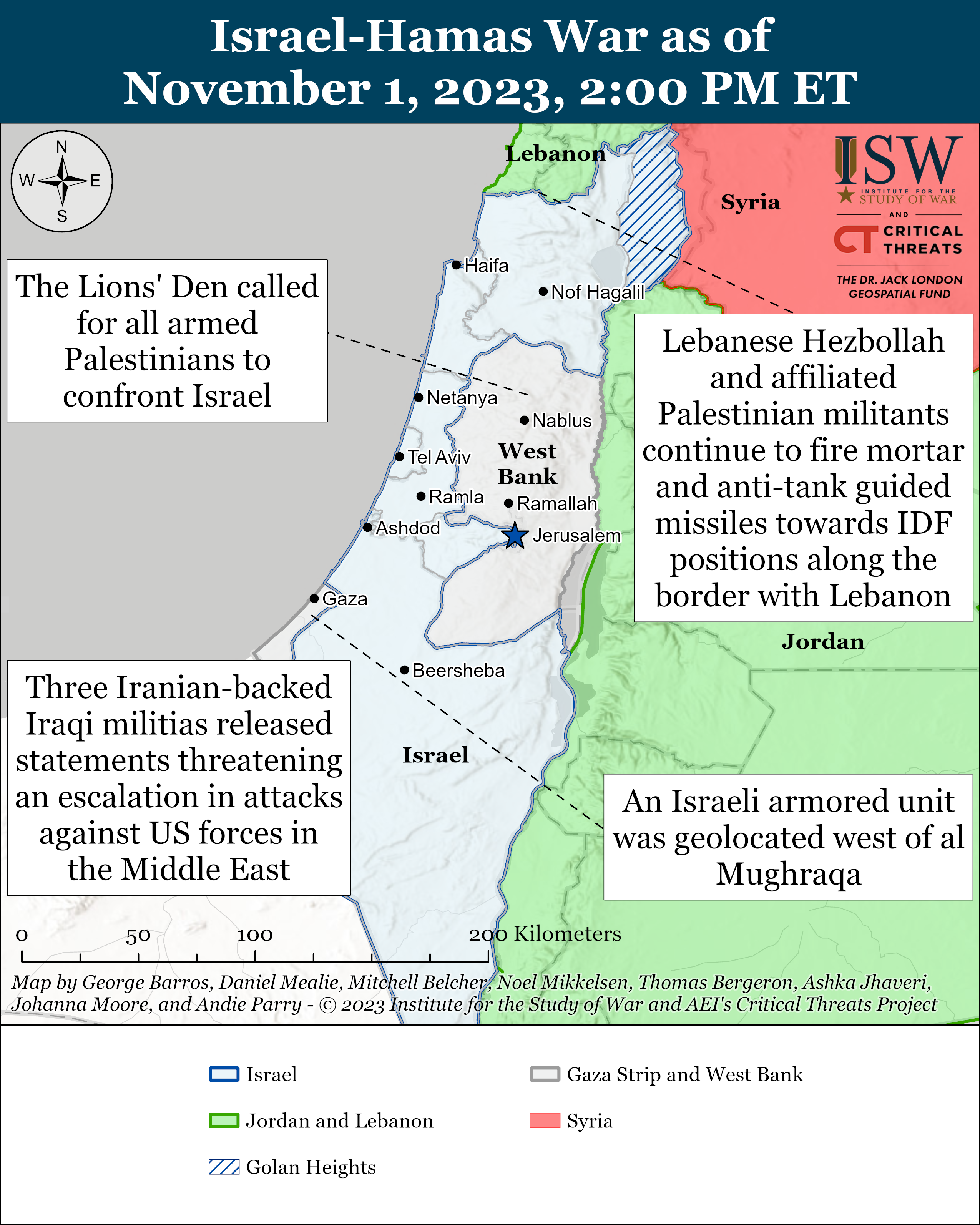
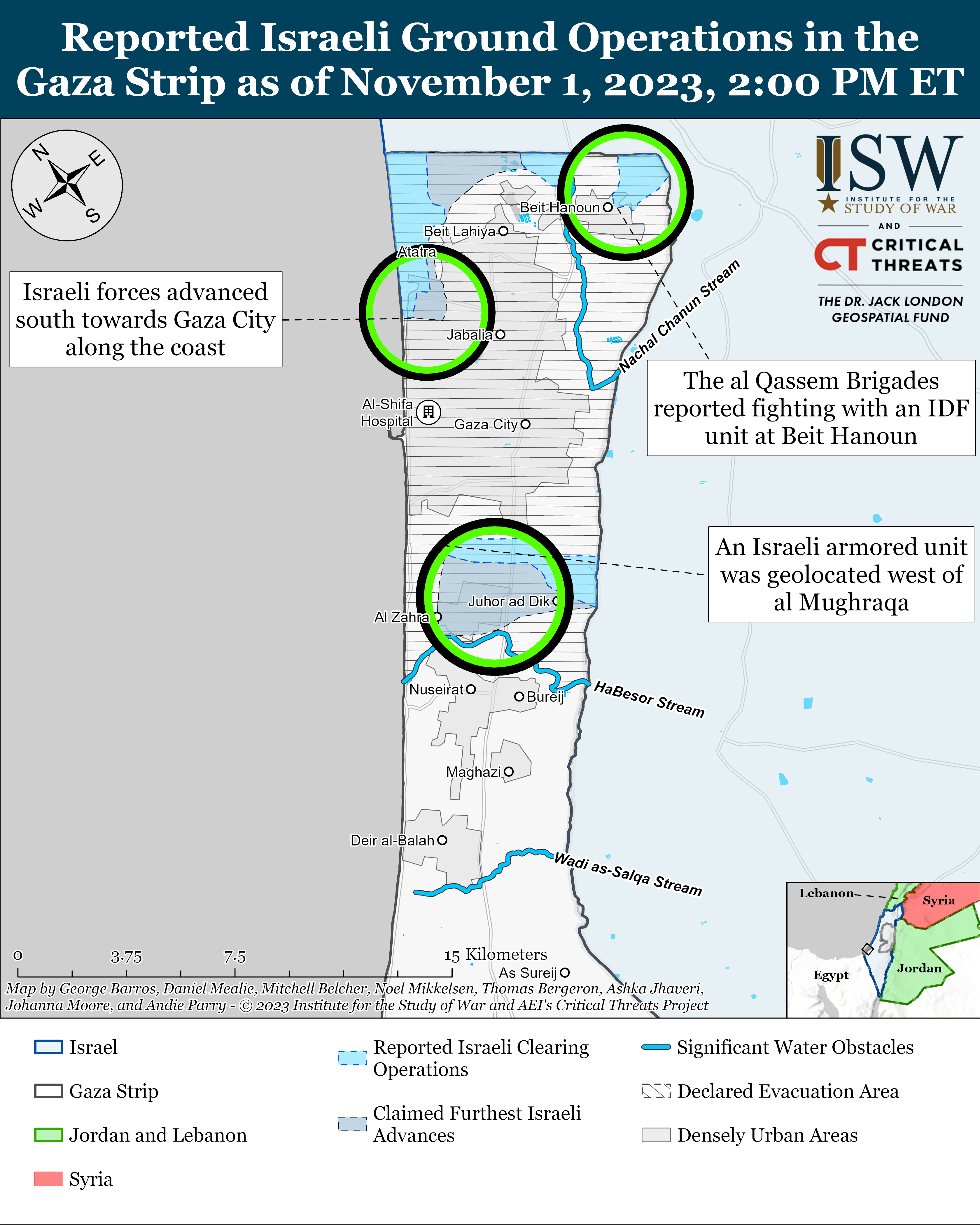
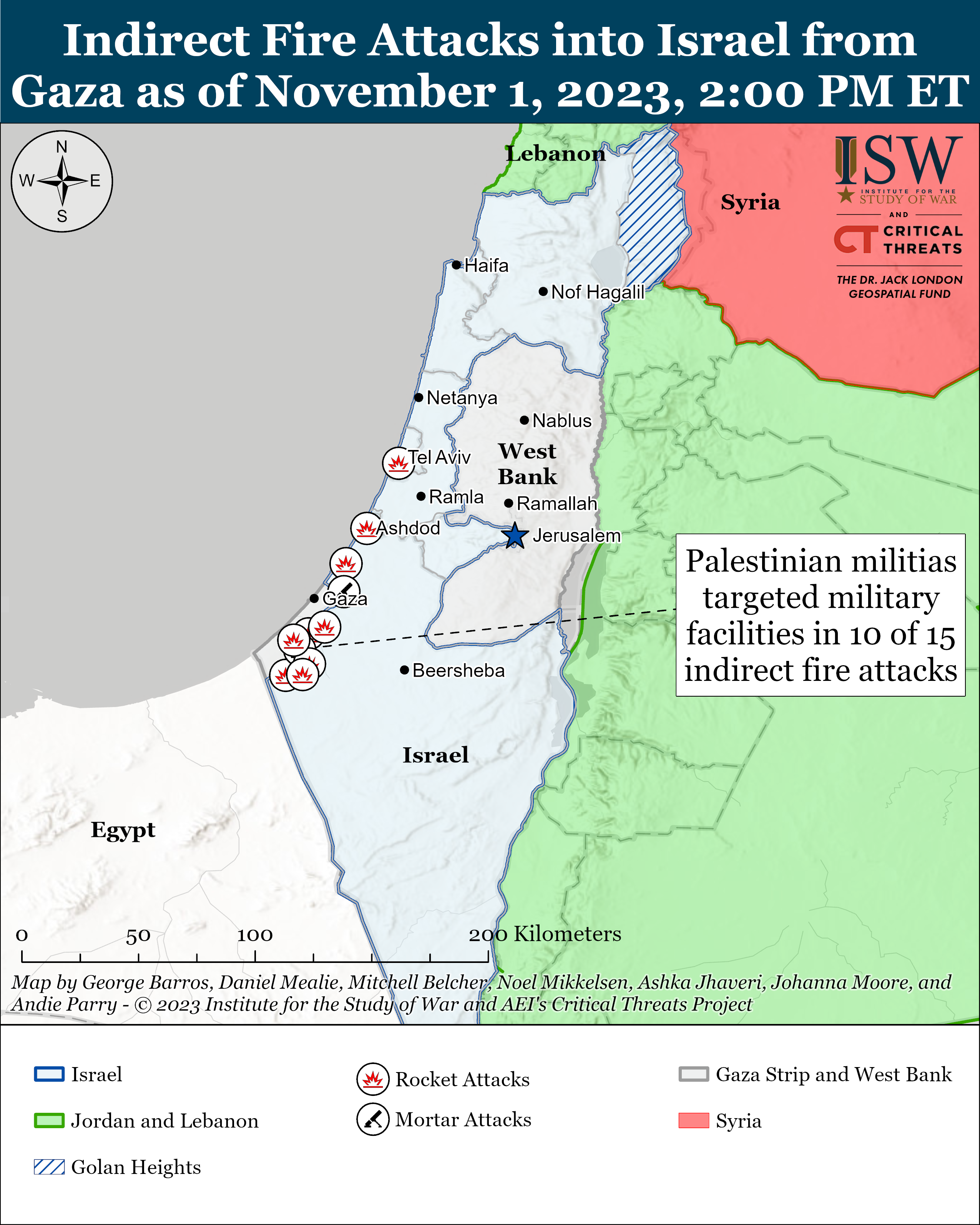
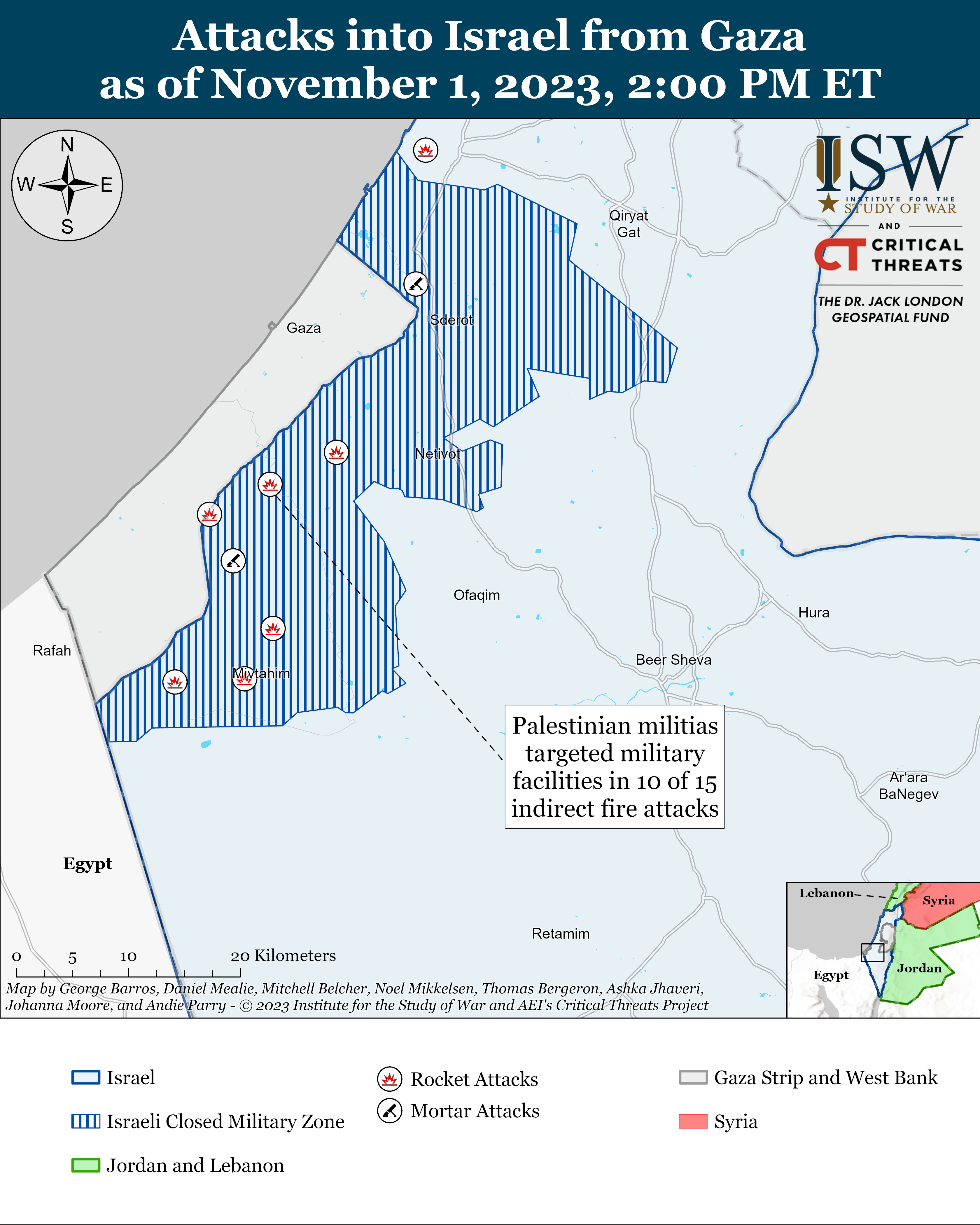
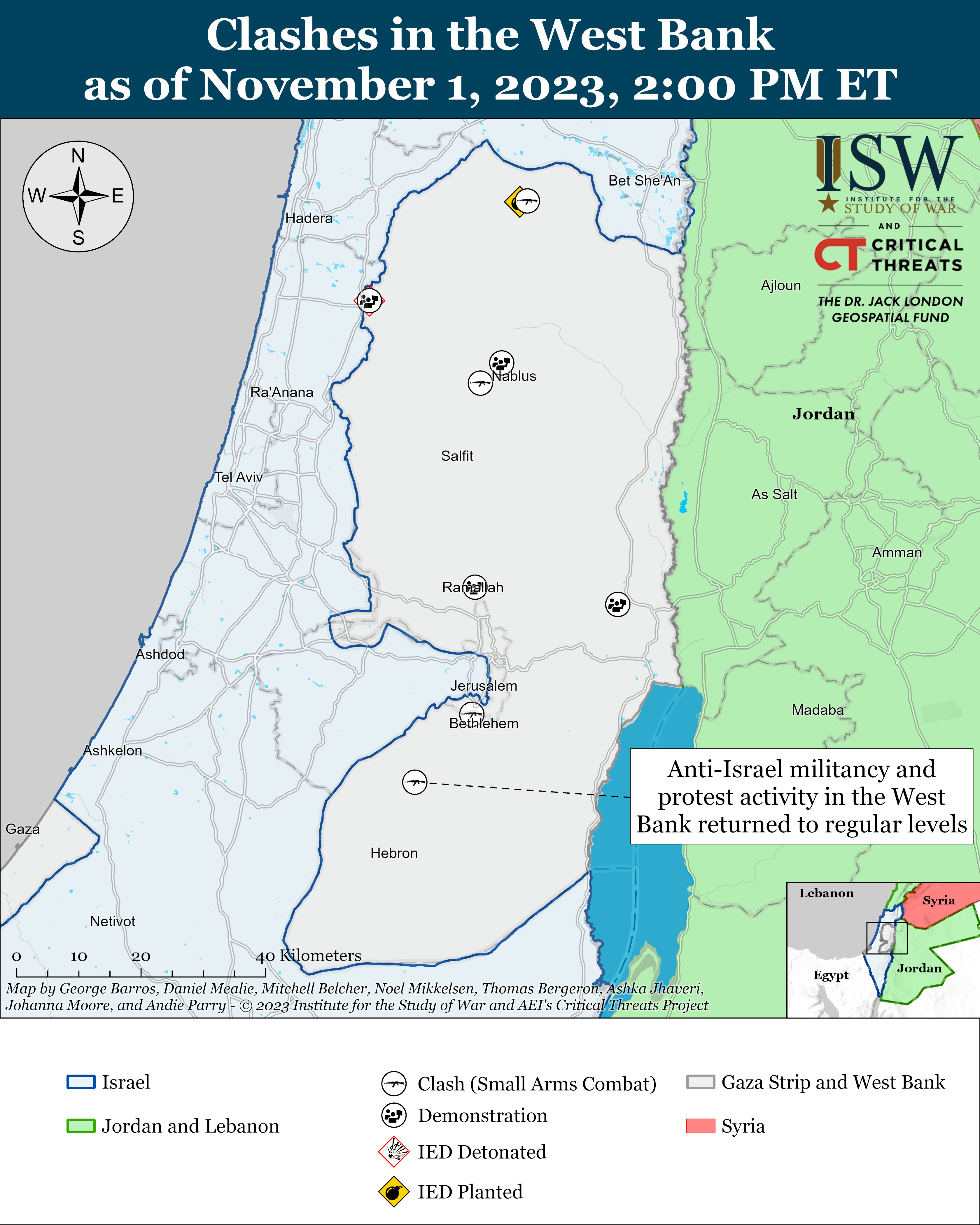
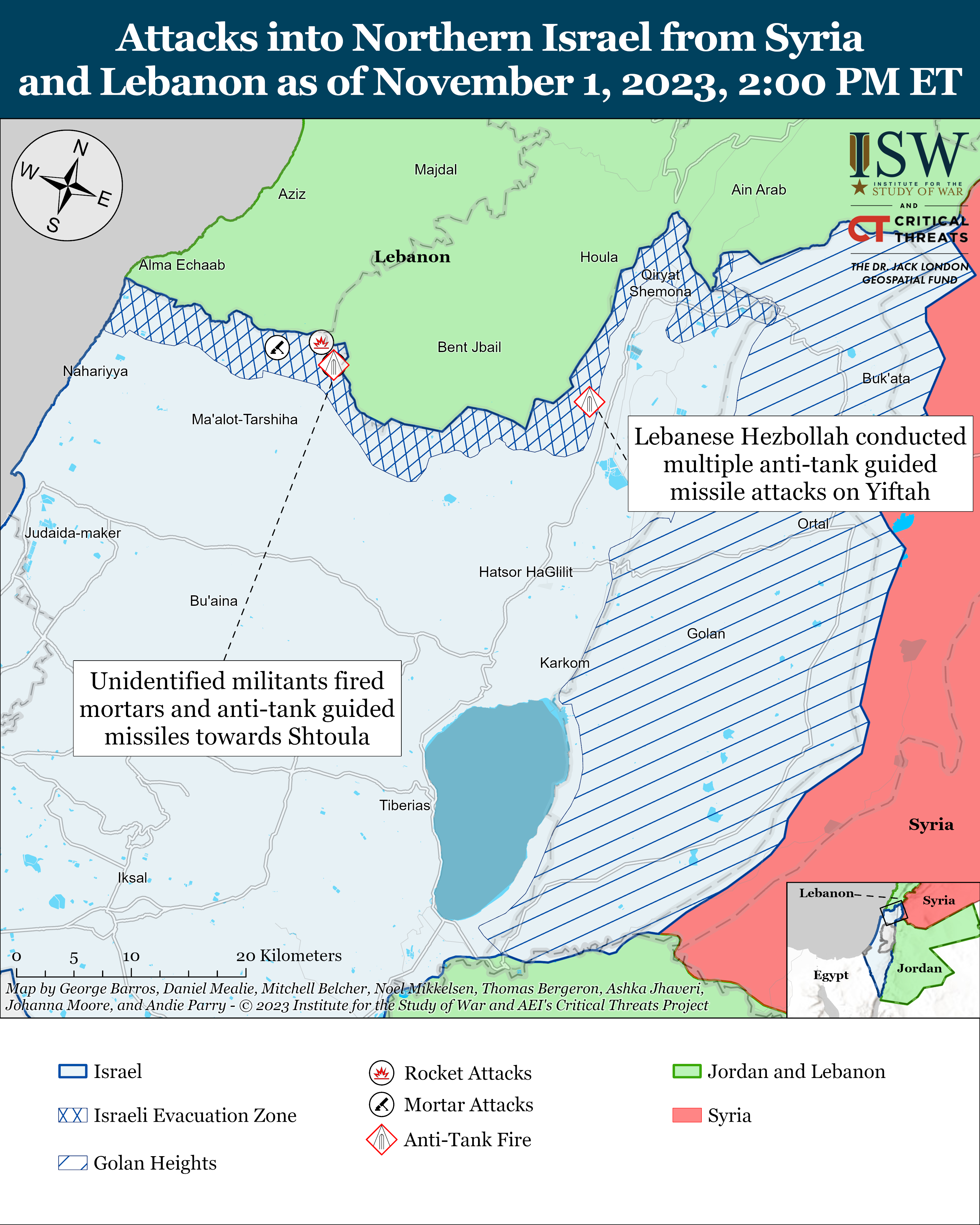
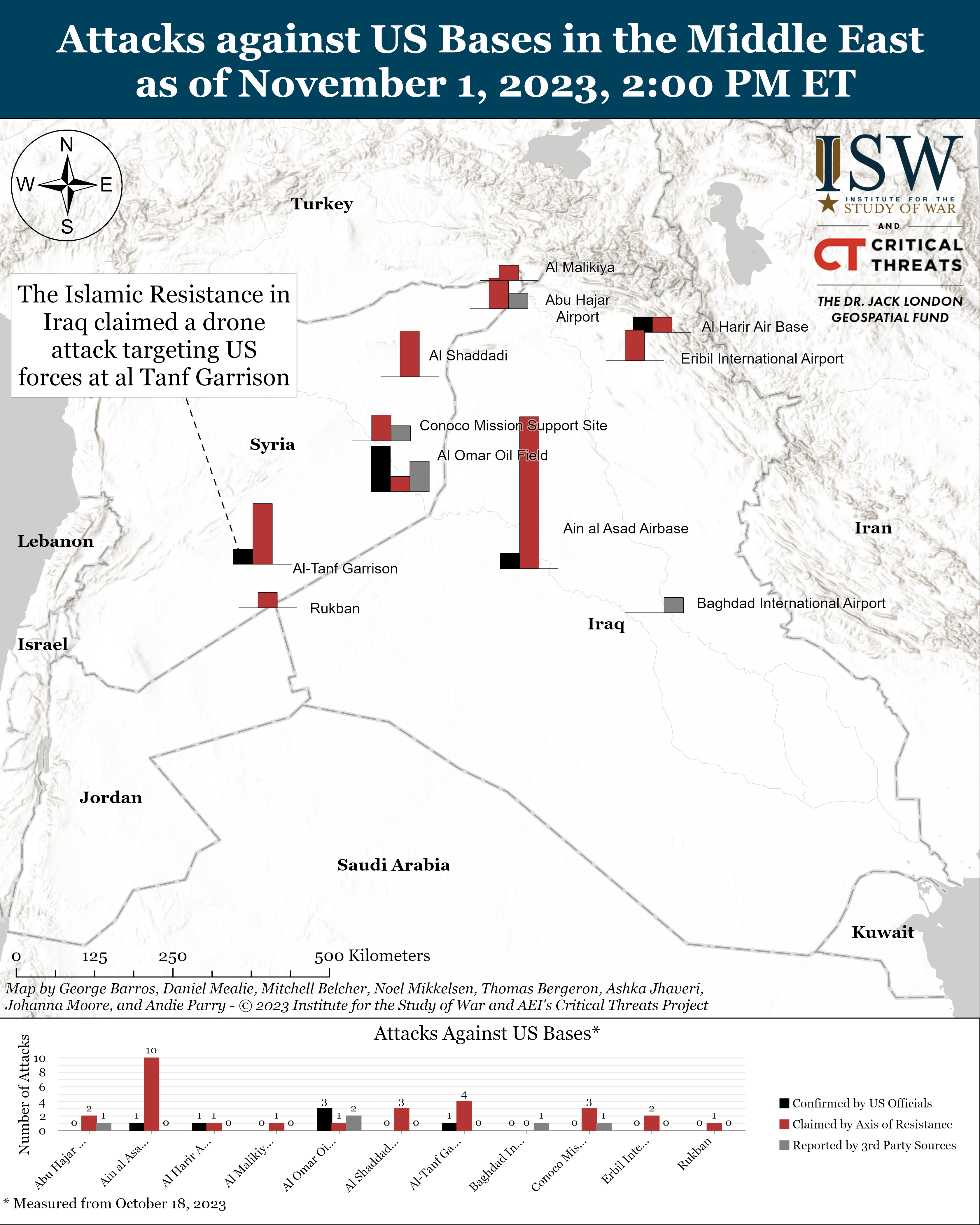
No comments:
Post a Comment